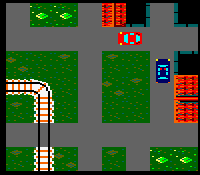
ERREUR 404: Désolé, le document que vous avez demandé
n'existe plus ou a changé d'adresse ! ...
Redirection vers le nouveau lien : Z80 Disassembler (Computing With the Amstrad)
Si vous arrivez sur cette page via un lien interne au site, veuillez nous contacter (en nous précisant sur quelle page vous avez trouvé ce lien défectueux et quel est ce lien) pour que nous corrigions le problème aussi vite que possible.